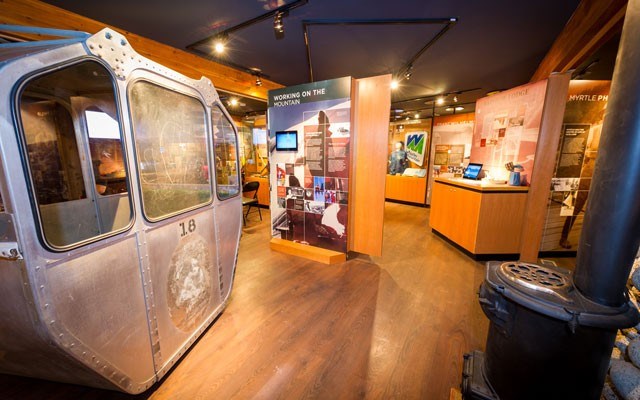In so many ways, Whistler Museum is a link to the past, especially in terms of the aging building in which it is housed.
The four cobbled-together trailers that currently display the settler and ski-town history of the resort and region include two that were once Whistler's post office and its library.
It may be no surprise, therefore, that at the museum's 2016 annual general meeting (AGM), plans for an enlarged permanent museum building were discussed.
Vice-president of the museum's board of trustees, Colin Pitt-Taylor, read the report by president John Hetherington, who was absent. The new building is a priority.
"The museum has become an important and well-recognized part of Whistler's cultural heritage," Pitt-Taylor read out to the 22 members of the museum society who were present.
"It will be on the 'Cultural Connector' that the RMOW (Resort Municipality of Whistler) is developing to link and provide easy access to the main cultural facilities located near the centre of the community. A new building for the museum would fit in well with this concept."
Pitt-Taylor added his own perspective: "We are working on building a new museum in the next little while. We've been through a couple of plans, and we're getting closer to going to the muni with a proposition, but right now we're still in the planning stages."
He said they hoped to begin fundraising for a new museum building in the "next few months."
"We definitely want to be out of here, we have stuff stacked everywhere and need more space. This building is going to eventually fall down," Pitt-Taylor said.
The president's report stated, "the board has been trying to develop a new museum for the past two years. We have considered six different locations, and are currently working on two possibilities."
They were described as "very different" options, and both will be presented to the RMOW in the coming months.
As well, visitor numbers had increased substantially, from 4,500 in 2013 to over 10,000 in 2015. Last year there was 10,765 visitors, an increase of 7.2 per cent. It is the third year in a row for record-breaking visitor increases. The president's report stated that the museum attempts to cater to visitors to Whistler coming to see the exhibits, with both the local community and visitors attending programs or events such as the Speaker Series.
Other achievements included scanning in approximately 35,000 photos, mostly from the Whistler Question's archive, the creation of the Whistler Colouring Book, and small exhibits developed for the Whistler Film Festival.
Staffing is now at four full-time employees year round, with 11 seasonal full-time and part-time staff in 2016.
The museum's financial results showed a modest surplus in 2016, with self-generated revenue, grants and the annual fee-for-service from the RMOW.
Treasurer Roger N. Lundie said the society ended 2016 with revenues exceeding expenditures by $22,275 (total revenues equalling $317,627), compared with $14,410 (total revenues equalling $306,102) in 2015.
The museum's executive director Bradley Nichols listed the museum's achievements for the year, including noting that 2016 was the busiest year in the museum's history.
As well, the second year of the Discover Nature program in Lost Lake Park had 6,500 interactions over the summer; the 1923 Carter Expedition temporary exhibit launched a new temporary exhibition space that had been opened up within the existing building envelope; museum staff made presentations at the B.C. Museums Association annual conference, which took place in Whistler; the first Mountain Bike Heritage Week was launched; as well as admissions, a further 1,401 people came to the museum through extra programs and events.
Nichols also noted that there is a large backlog of work in the collections of the museum in terms of cataloguing and preserving it, as well as making it more accessible to the public.
Nichols told attendees that the need for space was ever growing, with the archive taking up 6.4 sq. ft. (0.6 sq. m.) more per annum, thanks to the kindness of donors.
The museum's executive named Danielle Winkle the museum's Volunteer of the Year for 2016. She helped with research and cataloguing the archives.




